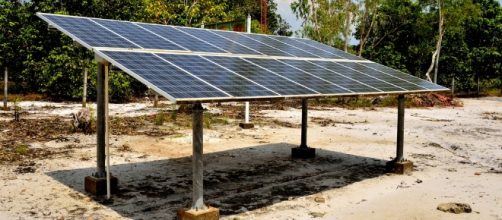In many ways, India is still two countries. There is the modern India that has a prosperous middle class with high-tech industry and even its own space program. Then there is the impoverished India, where people live in remote villages much as they have for thousands of years, mainly as subsistence farmers or workers on large plantations. The one thing that could bring as many as 300 million Indians into the 21st century is access to electricity. With electric power come lighting and modern appliances.
According to Climate Progress, India is setting up off-grid and in some cases mini-grid energy systems based on solar energy.
The approach eliminates the need to create power lines to hook up every village to the grid, a daunting idea for a country as large as India. Needless to say, the reliance on solar also reduces pollution and greenhouse gasses that are produced by fossil fuels. The central grid has also proven to be unreliable, with frequent power outages, a factor that makes solar power even more attractive.
The creation of a system of rural electrification based on solar power has required some innovative financing, using seed money provided by development foundations. By providing low-cost loans to individuals to install rooftop systems and villages to create mini-grids, these foundations are changing the lives of millions of Indians practically overnight.
A solar system can be set up in a matter of days. Many Indians have been waiting to be hooked up to the grid since independence, almost 70 years ago.
In some cases the mini-grids have acted as backups to the primary grid, kicking in when power outages happen. In other cases, the mini-grids operate independently, bringing light and power to a part of the world that has hitherto not had access to it.
Many rural solar systems are small scale, enough to run lights and charge mobile phones. But the systems can be scaled up, as they have in the United States and Europe, to provide as much energy as needed in the future. Thus much of rural India is destined to leapfrog the era of fossil fuel generated energy directly to a solar energy economy.

